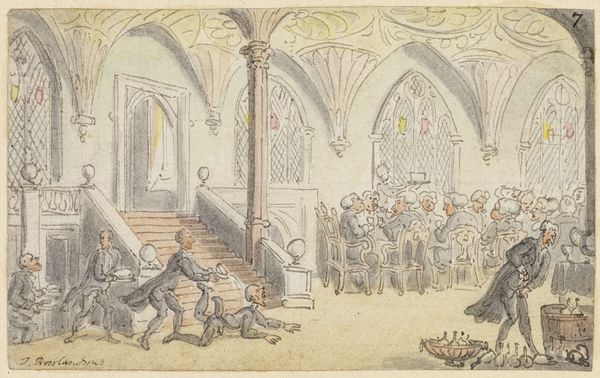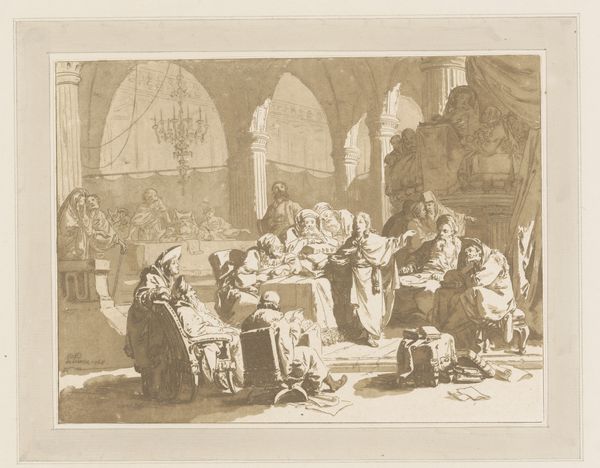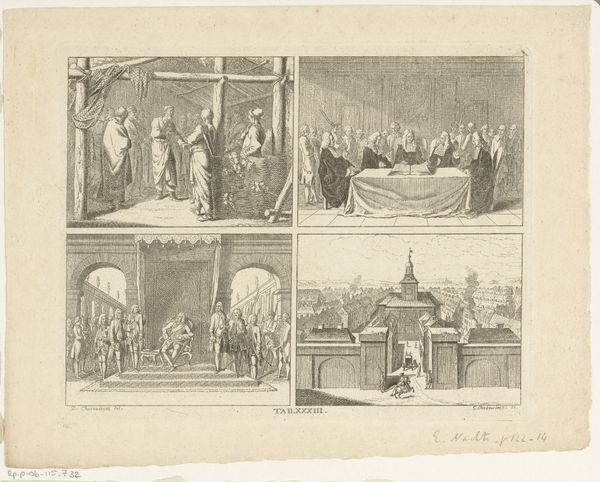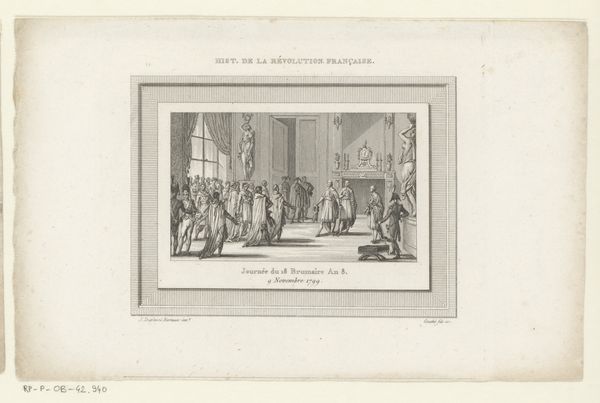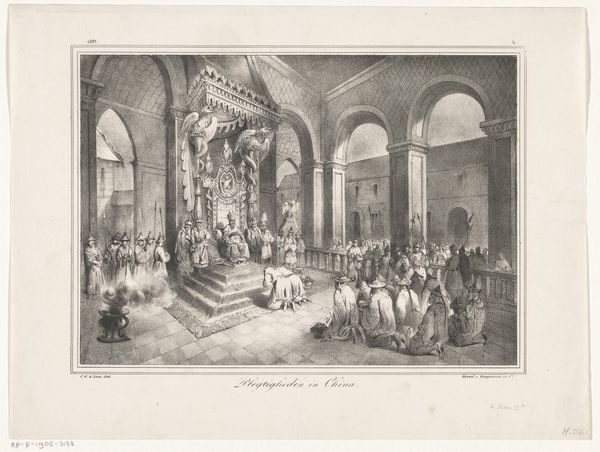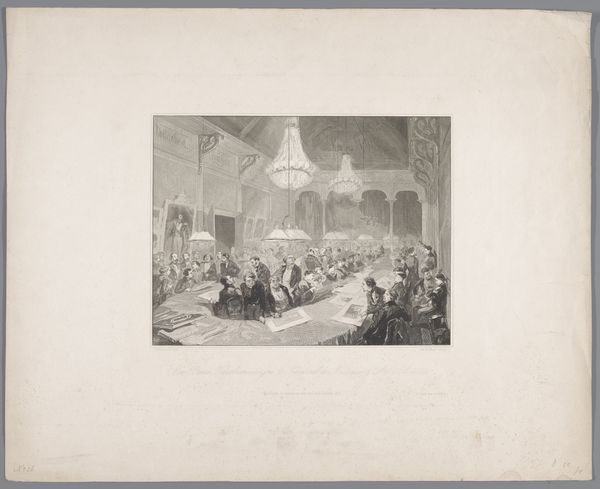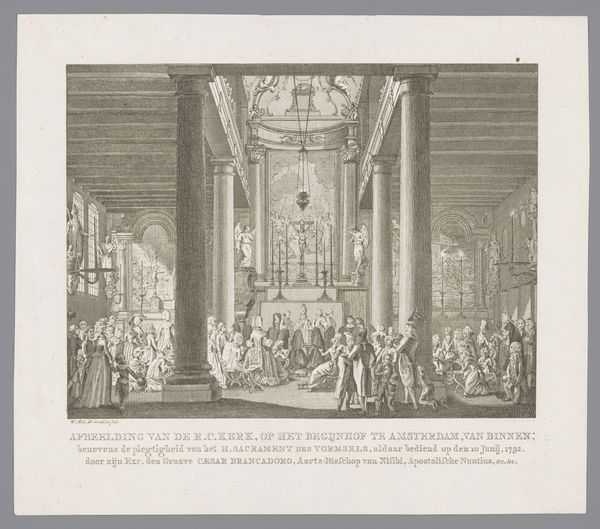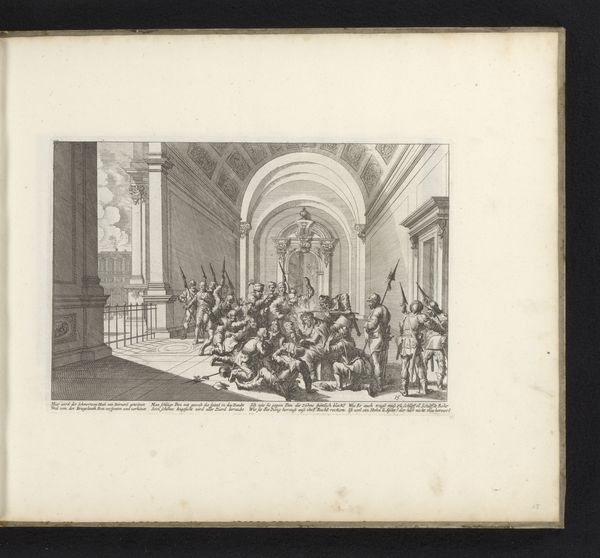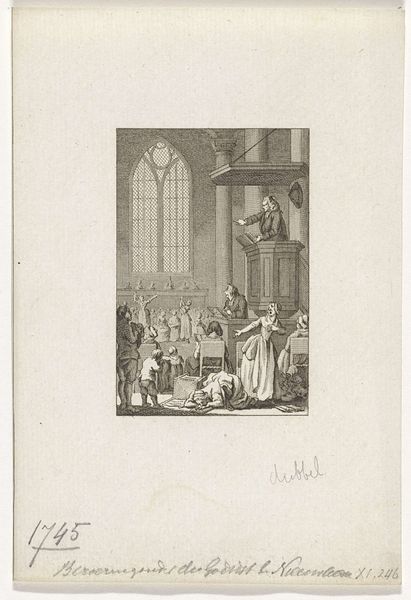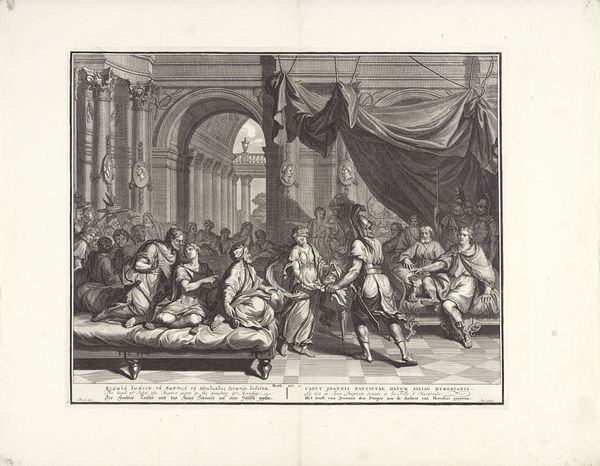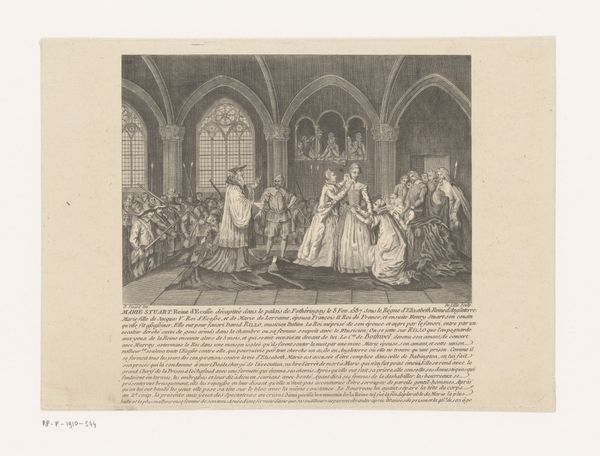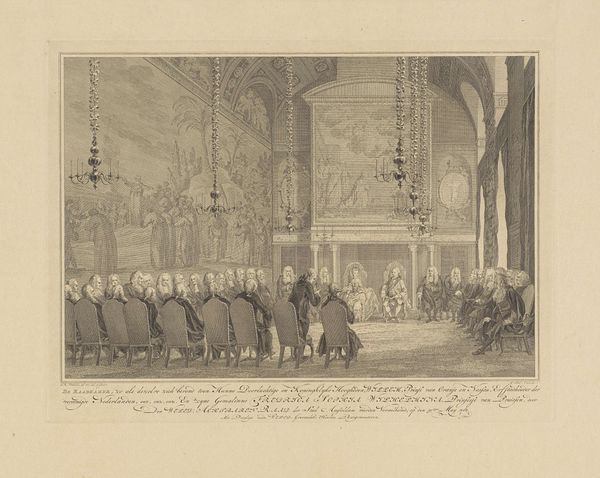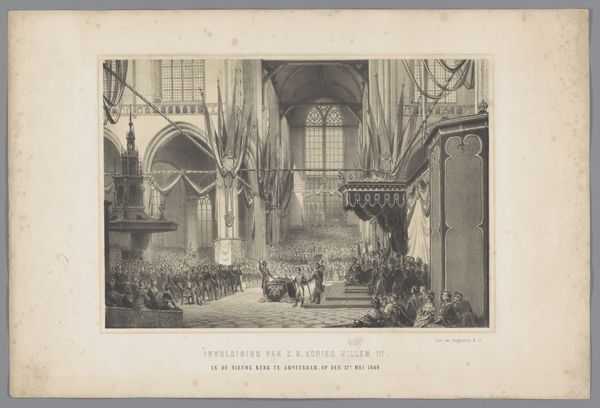
drawing, print, etching, ink, pen
#
portrait
#
drawing
#
aged paper
#
toned paper
#
narrative-art
# print
#
etching
#
caricature
#
old engraving style
#
sketch book
#
figuration
#
personal sketchbook
#
ink
#
romanticism
#
pen-ink sketch
#
line
#
sketchbook drawing
#
pen
#
cityscape
#
genre-painting
#
history-painting
#
storyboard and sketchbook work
#
academic-art
#
cartoon carciture
#
sketchbook art
Dimensions: height 149 mm, width 242 mm
Copyright: Rijks Museum: Open Domain
Curator: Here we have Thomas Rowlandson's 1819 print, "Doctor Syntax at Dinner in Oxford," housed here at the Rijksmuseum. Rowlandson, a master of social satire, used etching and ink to capture a lively, if somewhat chaotic, scene. Editor: Wow, total mayhem! My first thought is that it looks like a boozy university prank gone wrong. The lines are so energetic, full of squirrely tension. I can almost smell the spilled wine. Curator: Precisely! Rowlandson’s caricature captures the zeitgeist of academic life, reflecting societal critiques of privilege and perhaps irresponsible excess, specifically as perceived in institutions like Oxford. What social commentary might Rowlandson be offering through the character of Dr. Syntax? Editor: I think Syntax is the classic outsider crashing a posh party. I wonder, did Rowlandson experience social anxiety like this, and used his drawings to process this and connect? Either way, the slapstick with the tripped scholar is brilliant, contrasting with the supposedly learned group at the table. They barely seem to notice, which drives up the sarcasm and satire even more! Curator: Agreed, the narrative offers several layers of analysis. Rowlandson uses contrasting groupings within the composition to create an us-and-them dynamic between Syntax's misfortunes and the others at leisure. Editor: Absolutely! The detail of the architecture feels intentionally stuffy to show off against these stumbling humans; there’s this push-and-pull. You know, it reminds me of some modern political cartoons…art doesn’t change that much really! Curator: Well, Rowlandson masterfully merges style, medium and the socio-political elements, creating something accessible and ripe for historical and contemporary critical inquiry. What he presented in 1819 resonates to current views and interpretations, which further underscores the image's importance. Editor: Right, I'm still stuck on the physical humor and overall scene—art should move, stir something. This piece does that with a real kick. Curator: A potent final thought. And a vital takeaway for any student.
Comments
No comments
Be the first to comment and join the conversation on the ultimate creative platform.
